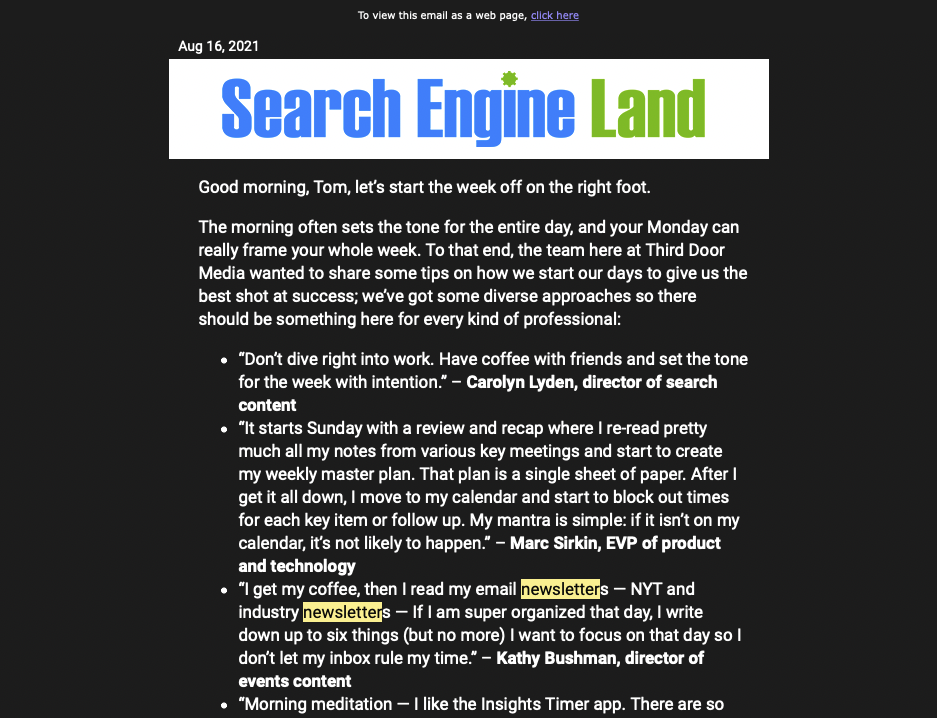5 Marketing Growth Strategies for Small Businesses
What is a growth strategy? To put it obviously – it’s a plan that outlines how you will grow your company. It includes marketing and advertising campaigns and new product development, market penetration, or new partnerships. There’s a saying, “Good things come to those who wait.” However, to successfully grow a business, “sit and wait” is a terrible plan. Sure, you need patience for your strategies to work, but it takes thoughtful effort to grow your business effectively.
How do growth strategies differ for small businesses?
Small and large businesses have many differences, but several key differences are audience size, the scope of business, and leverage. Therefore, a growth strategy for small businesses is different from a growth strategy for large companies. For example, suppose you’re marketing to an audience of 100 people with no leverage (i.e., without access to distribution channels). In that case, your plan will be very different from something targeting 20 million people and having major distribution channels in place.
Additionally, a large corporation typically has several (or many) revenue streams and target audiences, while small businesses only have a few. Thus, a growth strategy for a large corporation may seek only to grow one arm of the company. In contrast, a small business’s growth strategy will likely seek to develop the entire business.
5 Marketing Growth Strategies for Small Businesses
In this post, I’m going to focus on marketing tactics. However, the primary business growth strategies are market expansion, market penetration, product development, and diversification. But I won’t be discussing those here. Instead, I will focus on marketing efforts that will amplify what you’re already doing or the business growth strategy you’re pursuing.
Read more about business growth strategies in this post.
1. Create a blog to share your business’s story and expertise

Blogging, also called “content marketing,” is a fantastic way to tell your company’s story and display your knowledge. It can also be a terrific way to generate leads for your business.
Some of the most common types of blog posts are:
- How-to’s
- Interviews with experts
- Case studies
- Show-and-tells
- Company culture highlights
- Industry news
- The possibilities are endless!
2. Create an email marketing campaign that is personalized and relevant

“eMAil MaRkeTiNg iS dEad,” said many, many incorrect people. Email marketing is still one of the best channels to reach customers. In fact, email marketing is the preferred channel of communication for many customers and provides one of the highest rates of return. That’s why it’s so important to make sure your emails are personalized and relevant to recipients to get more click-throughs or conversions.
There are a few different ways you can do this:
- Personalize subject lines based on recipient location
- Personalize the body content using merge tags – you know, like when an email says, “Hey Tom, how’s it going?”
- Develop drip campaign workflows based on user interaction. For instance, if a user clicks on a button about a particular topic, deliver them more emails about that topic.
- Experiment with different types of content to see which ones work best for your customers
- Include links to blog posts or downloadable content from your website
3. Use social media platforms like Facebook, Twitter, and Instagram for networking, audience engagement, and advertising

Social media has an advantage over email in that you can purchase attention through advertising. (Side note: NEVER buy email lists. If your emails get marked as SPAM too many times, your account could become blocklisted!) Additionally, social media is temporary and, well, social. People can see how others respond and react to social media posts and cultivate engagement that way. This makes social media the perfect channel for getting in front of your audience often. Don’t be afraid to make some jokes and show a few behind-the-scenes shots. These days, people expect nearly all consumer brands to have some social media presence. Users view it as a way to get to know the personality and purpose of your company better.
Read more: How to set up social media accounts for your business.
4. Participate in online forums about your industry or niche market

I love this tactic because it gives personality to your brand and makes it appear immediately credible. Whether on a Reddit forum or Facebook group, Stack Overflow or Quora, answering questions and being involved in the online community will position you and your company as the experts in your industry. Just don’t go in there spamming everyone with product placements. Be helpful and sincere.
You can also use forums to find brand ambassadors. If the community likes your product, they’ll recommend it to friends who might not have heard about it before! Post a question and see what sort of responses you get.
Another note: Many online forums also offer advertising opportunities. If you know your audience spends a lot of research time in a specific forum, double your efforts by participating organically and through paid ads
5. Attend trade shows to connect with potential customers

Yes, even in the digital age, trade shows can still be an important, worthwhile marketing tactic. Trade shows are a great place to connect with potential customers, especially in an industry like technology or design. One major attraction about trade shows is that everyone in attendance is there for the same purpose. Suppose you’re a fashion design consultant at a fashion design trade show. In that case, nearly everyone there is a target client, and they are already in the mindset to be open to solutions that help with their business. You can also give out free samples of your product and talk about it for the hours that people are there. Make sure to bring a way to capture the email addresses of people you talk to! (Hearken back to Marketing Growth Strategy #2)
While trade shows are great, be sure to do some research before going! Some trade show organizers charge thousands – even tens of thousands – for trade booths. If you want some help putting together trade show booth materials, contact us and we’ll take care of it for you!
Conclusion
Don’t sleep on these marketing growth strategies. However, these aren’t the only ones available; many other strategies work well, too. Remember that every business is unique and will naturally see better results utilizing some techniques over others. At Hot Dog Marketing, we get to know our clients’ businesses, do market research and examine the competitive landscape to inform a well-crafted marketing strategy. Taking these steps into account helps us determine how and where our clients can spend their marketing budget to realize the best returns on investment. If you’re interested in hiring us for a marketing growth strategy for your business, contact us!
So, what are your growth marketing strategies, and what growth marketing strategies have you found successful for your small businesses? Please share with us on social media!
